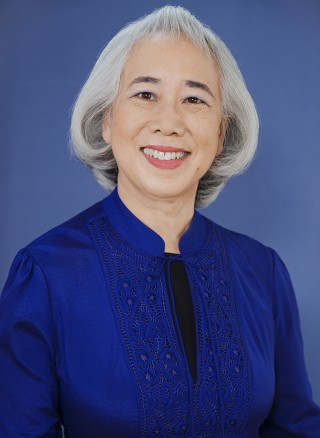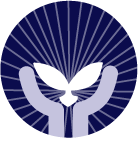Cathryn S. Lee

San Francisco based violin teacher Cathryn S. Lee has taught families and teachers around the world since 1973. She is respected for teaching all ages and levels using her detailed and practical “best of both worlds” approach inspired by her studies with Dr. Shinichi Suzuki and her “traditional” studies with the late concert artist Dame Camilla Wicks. As a teacher trainer, Cathryn has taught and lectured at SAA National conferences, Leadership Summits, Suzuki Method World Conferences, the first International Suzuki Teacher Trainer Conference in 2009 and at the 16th World Conference in Japan. She has given master classes and pedagogy classes in Australia, Canada, England, Germany, Italy, Japan, New Zealand and throughout the United States. Cathryn is a guest lecturer in String Pedagogy at the San Francisco Conservatory of Music. Cathryn is the author of Bow Exercises, Bow Strokes and the Bow Stroke Excerpts books.
In 1977, Cathryn founded the Suzuki Music Studio of San Francisco where she continues to teach students and train teachers. Cathryn has a B.A. in Performance and Composition and an M.A. in Performance from San Francisco College for Women, and a teaching certificate from the Talent Education Institute in Japan. She and her husband raised sons, Whit, an actor/violinist in New York City and Corin, a violinist with the ETHEL String Quartet and Founder of Liberated Performer.
Instrument studied in Japan: Violin
Dates in Japan: Four trips to study with Dr. Suzuki in Japan were in 1975 and 1977 June-August; 1979 and 1981-82 December-February
Years and locations of workshops with Dr. Suzuki that were outside of Japan:
- 1976 American Suzuki Institute-West San Francisco, California, USA
- 1978 International Suzuki World Conference, San Francisco, California, USA
- 1979 International Suzuki World Conference, Munich, Germany
- 1981 International Suzuki World Conference, Amherst, Massachusetts, USA
- 1983 International Suzuki World Conference, Matsumoto, Japan
- 1985 International Suzuki World Conference, Edmonton, Alberta Canada
- 1990 SAA National Convention, San Francisco, California, USA
Memories
“Violin is Easy, Yes?”
Lifelong Lessons in Character Development
By Cathryn S. Lee
I saw Dr. Suzuki every year from 1975-1983. Every time I saw him, he motivated me to deepen my understanding of the violin, myself, and others.
Dr. Suzuki often said, “Violin is easy, yes?” The first time I heard him say this was in 1975, when I started my studies in Japan. When he said, “Violin is easy, Yes?” I remember my reaction. I stood there nodding in agreement, a quizzical look on my face, thinking, “Are you kidding me, violin is hard.”
In 1977, Dr. Suzuki said to me, “Lee-sensei, violin is easy, yes?” This time my response was, “Interesting idea, Dr. Suzuki.”
Two years later, in 1979, Dr. Suzuki again said, “Lee-sensei, violin is easy, yes?” This time my response was, “Violin really is easy, Dr. Suzuki. Thank you!”
How to make the violin easy is the foundation for everything I teach. It has guided my teaching of technique, musicality, and character development. It has been my lifelong pursuit to make playing and teaching the violin easier.
Another phrase Dr. Suzuki used to say is “Let the bow play.” When he used that phrase, he was trying to get us to have a balanced bow arm. To achieve this, he had us do many bow exercises. In practicing these exercises, I found that doing bow exercises made violin playing easier. Bow exercises are the foundation for producing the “Suzuki Sound.” The “Suzuki Sound” is filled with a powerful resonance with multiple overtones and an energy that makes your sound sparkle and reflects your character.
Throughout my 50 years of teaching, I have taken both his concepts of “Violin is easy, yes?” and “Let the bow play,” and expanded upon them. My lifelong journey teaching with both of these concepts led me to create my three bow books, Bow Exercises, Bow Strokes, and Bow Stroke Excerpts. These books make the development of the balanced bow arm easy to attain and easy to teach.
When teaching students, training teachers, or giving my bow arm development courses, I often use the lifelong lessons I learned from Dr. Suzuki. Here are three of them.
Lifelong Lesson #1 - Keep an open mind and try everything.
Over the years I saw him teach the same point in many different ways. He was always teaching a whole-arm motion approach to the string. He would say, “Hold your bow upside down,” or “Hold your bow by the horsehair.” These unconventional approaches were often perceived as too weird or out of the box. From this teaching, I learned to keep an open mind and try the thing that seems unfamiliar or unconventional, then decide if it is useful or not.
Lifelong Lessons #2 - “To teach simply is to understand deeply.” -Whit K. Lee
Dr. Suzuki knew I spoke very little Japanese, but he often asked me to interpret his English into clearer English. Looking back at being his interpreter, I realized that he was seeing if I understood his points well enough to teach others. When I explained one of his points successfully, he would sit back and smile. From this, I learned that the deeper I understood a point, the more simply I could teach it.
Lifelong Lessons #3 - Teach with humor, energy, and determination.
Dr. Suzuki often used humor to make people more comfortable in a lesson. He used humor to get us to try new things and to show us it’s important to have fun when we teach. He had bursts of energy when he taught, which gave the student energy to listen and learn. His energy and enthusiasm let us experience the excitement of learning to make violin easier. Lastly, he had endless determination to get us to accomplish his teaching point. In the midst of his humor, energy, and determination, he was always testing our character and listening for our heart.
My Own Lifelong Lesson for You: “Embrace the Joy.”
As we all continue through our lifelong Suzuki journeys, remember to find joy in trying something new; in discovering an easier way; in understanding something deeply. Remember to find joy in helping someone get better; in impacting someone’s life beyond the music; and in listening to one another’s “Suzuki Sound,” their character, their heart.
Photo in Matsumoto

Cathryn S. Lee taking a lesson with Dr. Suzuki

